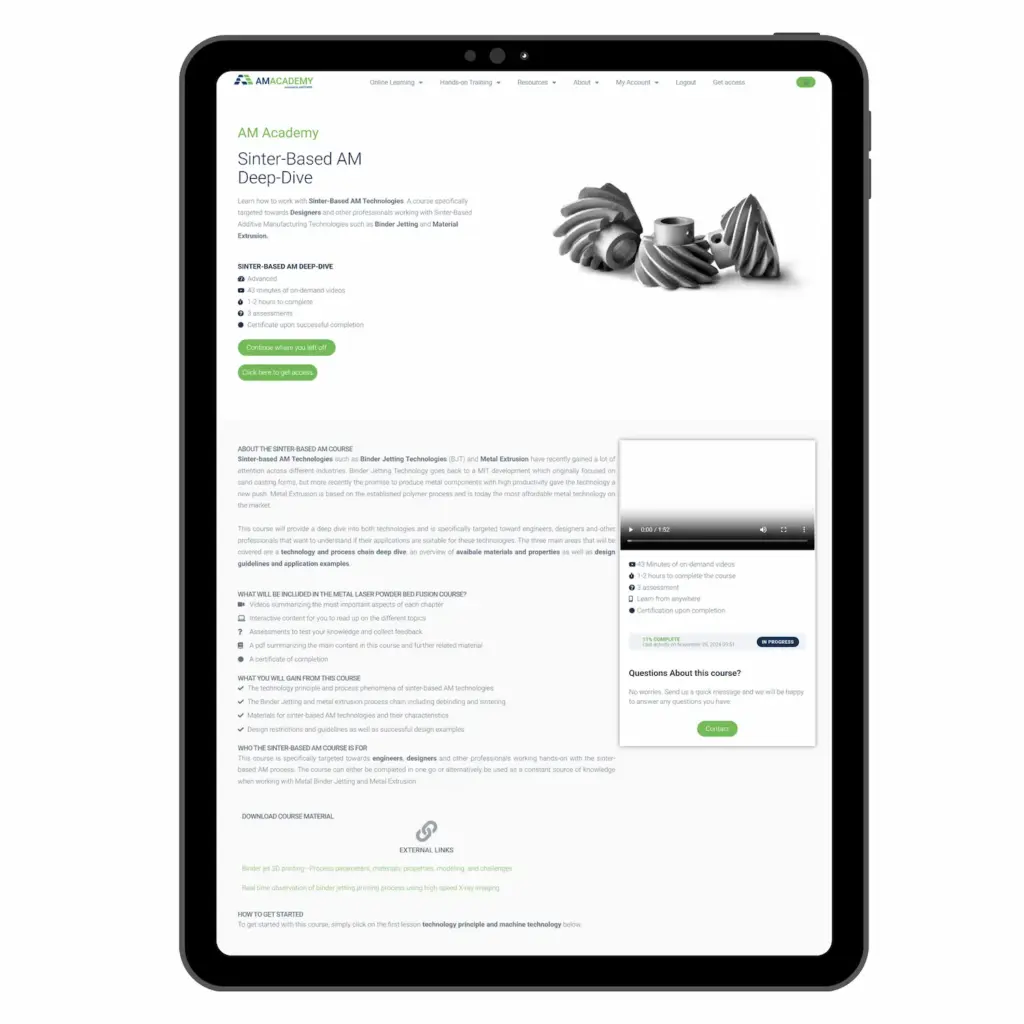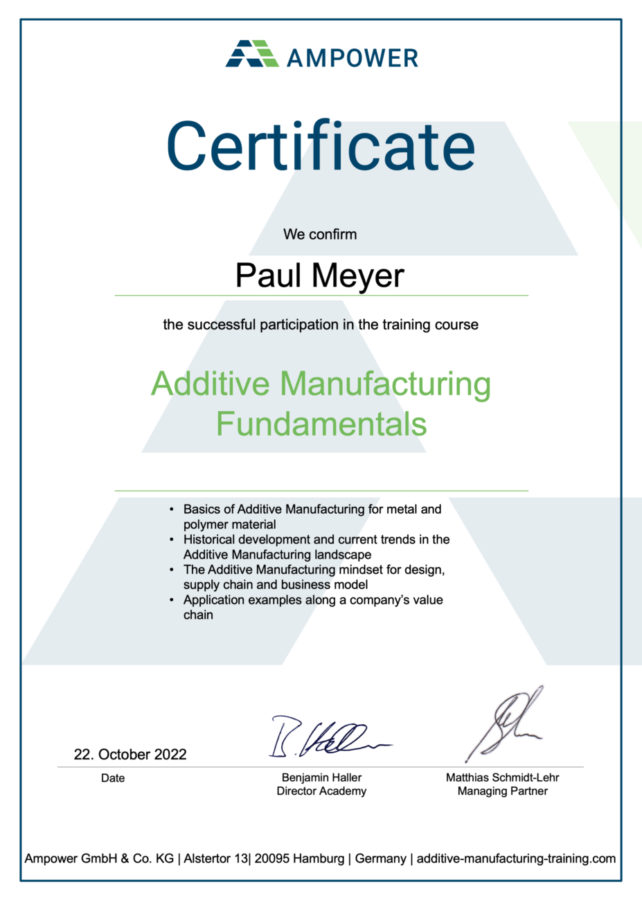AM Academy
Additive Manufacturing
Online Learning
Independent Online Learning Programs for Additive Manufacturing

The AM Academy offers a wide range of foundation and advanced Additive Manufacturing online learning programs. These trainings are targeted at engineers, managers and other professionals that are working with the technology on a daily basis. All programs are self-paced and can be combined with live trainings for a hands-on implementation of Additive Manufacturing.
Foundation Courses
Build essential knowledge and gain a solid understanding of AM fundamentals. Ideal for professionals new to the field or preparing for in-person workshops.
Advanced Courses
Dive deeper into specialized topics such as cost calculation, Directed Energy Deposition, sustainability, and process-specific deep-dives. Perfect for professionals seeking to expand or specialize their AM expertise.
What our customers say

Research Director, Smith+Nephew
How the online learning works
- Courses consist of short videos, interactive content and quizzes
- All modules are self-paced and accessible anytime
- Each course ends with a quiz and participants receive a certificate upon completion
- Team licenses allow managers to add colleagues, monitor progress, and manage training across multiple sites
- Online learning can be combined with live workshops for hands-on experience

Additive Manufacturing Online Learning Teaching styles
Combination of online learning with live courses
Each online learning course consists of a mixture of videos, interactive content and further reading material. The videos last few minutes each and summarize the most important content. Besides, you can click through the content with more details and external links. A quiz at the end of each course tests your knowledge. Every course comes with a pdf summarizing the content as well as further reading materials to dive deeper into the topics.
The AMPOWER online learning programs can be complemented by live courses that are held by AMPOWER employees or experts from our network. The online learning programs generally form a basis for a more hands-on and in-depth discussion during a live course. Live courses can take place online or at customer facilities.
Additive Manufacturing Online Learning Certificate and Tests
Ensure progress through tests and certificates
At the end of each course, a quiz assessing the most important content ensures that all relevant points have been understood. Each quiz consists of different question types such as True or False, Multiple Choice or visual sorting questions. Members receive a certificate for the successful completion of each course awarded by AMPOWER. Certificates are a great way to keep track of which employee has earned what type of skills.


Additive Manufacturing Online Learning Team Functionalities
Create a group for your company, add team members and monitor their progress
Purchasing a team license allows you to create a group where you can add colleagues and monitor their progress as well as view their test results. Simply create a group code and share it with your colleagues so they will automatically join your group.
Additionally, company-wide access can be set up in order to train an unlimited number of employees across different sites.
Additive Manufacturing Online Learning Trial Course
Subscribe to start free trial
You can access the first course Additive Manufacturing Fundamentals for free after subscribing to the AM Academy newsletter.

AM Fundamentals Trial
Understand the most important topics to get started with Additive Manufacturing

